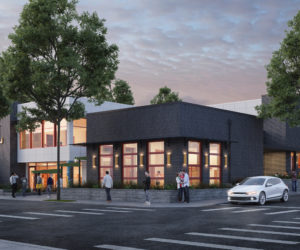Why high performance buildings?
High performance building standards lie at the foundation of how we build better.
The Climate Challenge
We are already experiencing the effects of climate change in DC. Our summers are hotter and our storms are becoming more and more frequent. We are not alone – growing evidence shows changing climate is harming communities around the world.
As a partner of the #iceboxchallengeDC, .be brussels easily compares itself to a city in the US, like Washington, D.C.:
“Belgium is highly depending on foreign sources of energy. Our economy has already survived several damaging energy crisis. Therefore, energy efficiency is at the heart of many economic policies and private management decisions.
As our buildings in our main cities are, just like in Washington DC, the main sources of energy consumption and emissions, Brussels capital has decided in 2009 that all new buildings and major renovations should be carried out, from 2015, under high performance standards. This decision, taken in concentration with the building industry was quickly integrated in the industry practices.
Today, it has positive repercussions not only for the climate and the air quality but it is also beneficial for the population at large which is much less dependent to the energy prices and live in a healthier environment.
This is the first step towards more sustainability, the second being the development of buildings that bring positive contributions to their environment.”
Benefits of High Performance Buildings

High performance buildings are comfortable, healthy, and quiet. Because they are designed well and built to last, they work well and are simple to use and maintain.

You know what you’re getting with a high performance building:
- They provide measured and proven results
- They remain comfortable during power outages and extreme weather events
- Their maintenance and energy costs remain low over the long term due to a better building enclosure
- They have better indoor air quality, reduced exposure to allergens, and reduced outdoor sound pollution
- They represent one of the best ways to fight climate change, as they use up to 90% less heating and cooling energy compared to other buildings

Operation, maintenance, and energy costs are lower for high performance buildings than for conventional buildings. This makes high performance building standards, such as the international Passive House Standard, an effective long-term solution for any building type.
- Building a high performance building might add marginal costs to the overall capital construction cost, but simple mechanical systems and robust, quality-assured construction reduce building operational costs.
- High-quality components and building durability reduce long-term maintenance costs for occupants
- Drastically reduced energy use provides immediate savings
- High performance buildings maintain market value over time

What are high performance buildings?
High performance buildings work. The Passive House Standard has been used for over 25 years to create highly efficient buildings in all climate zones, from the Antarctic to the equator.
High performance buildings rely upon five things:
- Efficient design
- Continuous insulation
- Airtightness
- Highly-efficient and air-tight windows and doors
- Continuous ventilation with heat recovery
Simplicity carries through in the use and operation of Passive House buildings. No special computerized controls are needed. Stable indoor conditions mean building occupants remain comfortable without bundling up in sweaters and extra socks in cool weather.
The Passive House Standard
The Passive House Standard is a simple, quality-assured approach to designing and constructing better buildings. It has a proven methodology for achieving high-performance in buildings of all types, and is the only internationally recognized performance-based building energy standard.
Learn more through these resources:
European Union in the US – GoGreen
“As part of our commitment to the Paris Climate Agreement, the European Union will reduce greenhouse gas emissions by at least 40% (from 1990 levels) by the year 2030. Adopting the highly energy-efficient Passive House (Passivhaus) standard and improving the energy performance of our homes and buildings are practical steps toward reaching that goal.” Learn more about the EU’s efforts at the link above.
North American Passive House Network Conference + Expo (NAPHN18)
Join North America’s Passive House community as it convenes in a hotspot of Passive House design construction: Pittsburgh, Pennsylvania. Thanks to a strong professional base, innovative governmental policy supporting Passive House, and a community of forward-thinking developers and housing agencies, Pennsylvania is home to one of the largest concentrations of major Passive House and other deep green development on the continent.
Case Studies by NK Architects
Click on the links below to review case studies of tested and proven high-performance buildings by NK Architects.
Morningside Crossing
Passive House Senior Housing. New construction plus retrofit of historic school in Pittsburgh, Pennsylvania.
Designed by NK Architects and Thoughtful Balance.
Park Passive
This 4-bedroom, 2.5-bath home is Seattle’s first certified Passive House and one of the Pacific Northwest’s most energy efficient.
Carrick Library
This two-story library building in Pittsburgh’s Carrick neighborhood replaces the existing, outdated 1-story Carrick Branch of the Carnegie Library of Pittsburgh.
Designed by NK Architects and Thoughtful Balance.



